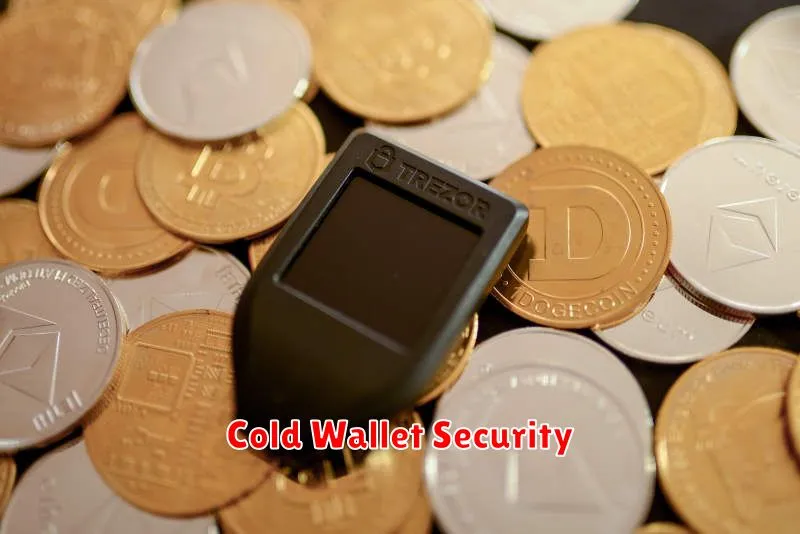Safeguarding your crypto assets is paramount in today’s volatile market. This guide will delve into the crucial role of a cold wallet in securing your digital currency. Learn how a cold wallet, an offline storage device, offers superior protection against hacks, malware, and other online threats compared to hot wallets. We’ll explore the various types of cold wallets, from hardware wallets to paper wallets, outlining their pros and cons to help you choose the best security solution for your crypto investments. Discover how to properly set up, use, and manage your cold wallet to maximize the protection of your valuable digital assets. Mastering cold wallet technology is essential for any serious cryptocurrency investor.
Why Cold Wallets Are More Secure
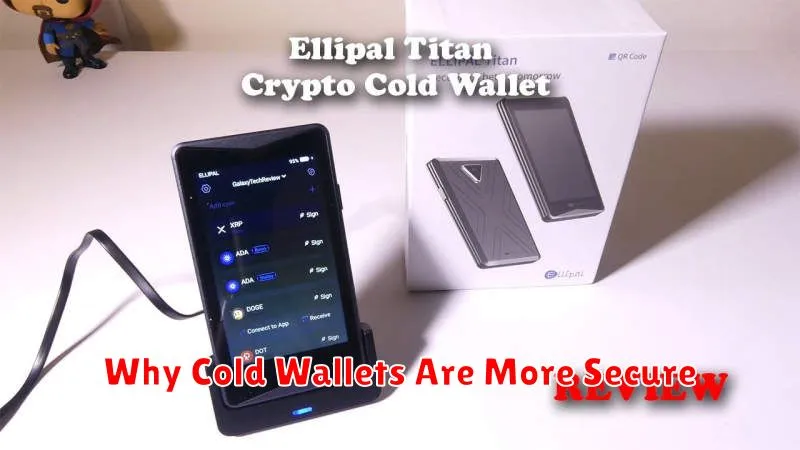
Cold wallets, also known as hardware wallets, offer significantly enhanced security compared to hot wallets (software wallets). This is primarily because they store your private keys offline, making them inaccessible to hackers who rely on internet connectivity to target digital assets.
The offline nature of cold wallets is their most crucial security feature. Since they are not connected to the internet, they are immune to malware, phishing attacks, and other online threats that can compromise hot wallets. Even if a hacker gains access to your computer or phone, your private keys remain safe.
Furthermore, reputable cold wallets employ robust physical security measures, such as tamper-evident casing and PIN protection, adding an extra layer of defense against theft or unauthorized access. This physical security complements the inherent security of offline storage.
In summary, the combination of offline storage and strong physical security makes cold wallets a far more secure option for storing your cryptocurrency compared to hot wallets, offering significantly greater protection against a wide range of cyber threats.
How to Set Up a Cold Wallet

Setting up a cold wallet involves several key steps to ensure the security of your cryptocurrency. First, choose a reputable cold wallet device. Consider factors such as ease of use, security features, and compatibility with your preferred cryptocurrencies.
Next, carefully follow the manufacturer’s instructions for setting up your chosen device. This typically involves connecting the device to your computer, creating a new wallet, and generating a unique seed phrase (a series of 12-24 words). This seed phrase is crucial for recovery and should be stored securely and offline, ideally in a physically separate location from the device itself. Never share your seed phrase with anyone.
Once the wallet is set up, you can transfer your cryptocurrencies from your exchange or hot wallet to your new cold wallet address. Be sure to double-check the recipient address to avoid irreversible losses. After the transfer is complete, disconnect your cold wallet from your computer and store it in a secure location.
Regularly update the firmware of your cold wallet device when updates become available to benefit from the latest security enhancements. Also, remember to back up your seed phrase in multiple secure, offline locations. Losing access to your seed phrase means losing access to your cryptocurrencies.
Best Practices for Storing Private Keys
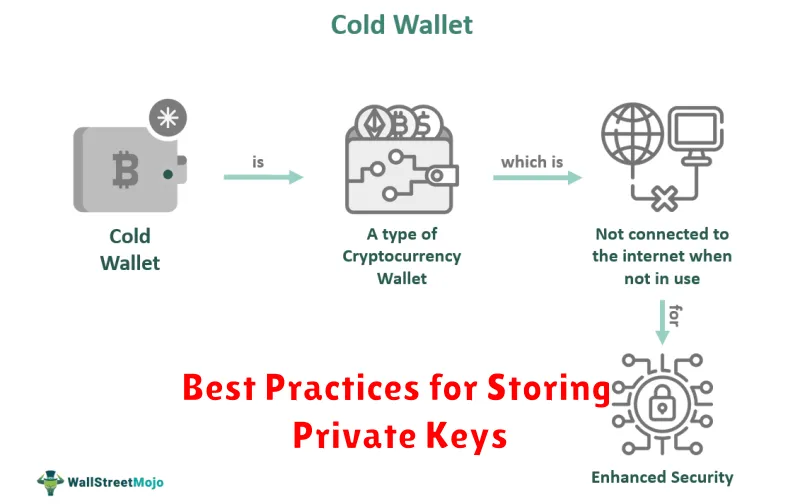
Never store your private keys digitally on a computer or device connected to the internet. This makes them vulnerable to hacking and malware.
Write them down on paper and store the paper in a secure, fireproof, and waterproof safe. Consider using multiple safes in different locations for enhanced security.
Use a hardware wallet. These devices store your private keys offline, providing a significantly higher level of security than software wallets. Choose a reputable brand with a strong track record.
Employ strong password protection for your hardware wallet and avoid reusing passwords across multiple accounts or services.
Regularly back up your recovery seed phrase, but never store the backup digitally. Use the same robust physical security measures as for your primary seed phrase.
Do not share your private keys with anyone, under any circumstances. Legitimate organizations will never request your private keys.
Destroy any old or compromised paper copies of your private keys securely by shredding or incineration.
Consider using a multi-signature wallet which requires multiple keys to authorize transactions, adding an extra layer of protection against unauthorized access.
Transferring Crypto to a Cold Wallet
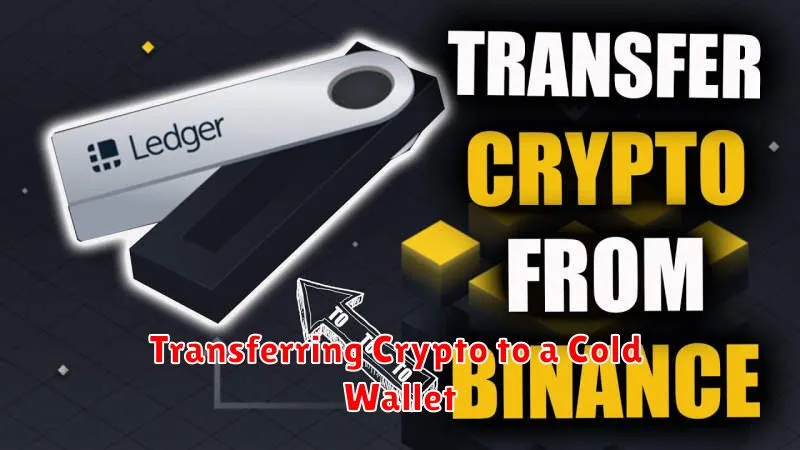
Transferring cryptocurrency to a cold wallet is a crucial step in securing your assets. This process involves moving your digital assets from a hot wallet (like an exchange or online wallet) to a cold wallet (a physical device or offline storage). This significantly reduces the risk of theft from hacking or malware.
Before initiating the transfer, ensure you have your cold wallet’s public address. This address is unique to your cold wallet and is required to receive the cryptocurrency. You will typically find this address displayed on the cold wallet device itself.
Next, initiate the transfer from your hot wallet. The process will vary slightly depending on the platform, but generally involves selecting the cryptocurrency, entering the cold wallet’s public address, and confirming the transaction. Double-check the address to prevent irreversible loss of funds.
After initiating the transfer, allow sufficient time for the transaction to be processed and confirmed on the blockchain. The confirmation time depends on the specific cryptocurrency and network congestion. Once confirmed, your cryptocurrency will be securely stored in your cold wallet.
Important Note: Always prioritize security. Use reputable cold wallets from trusted vendors and store your seed phrases safely and securely, away from the device itself. Never share your private keys with anyone.
How to Recover a Lost Cold Wallet
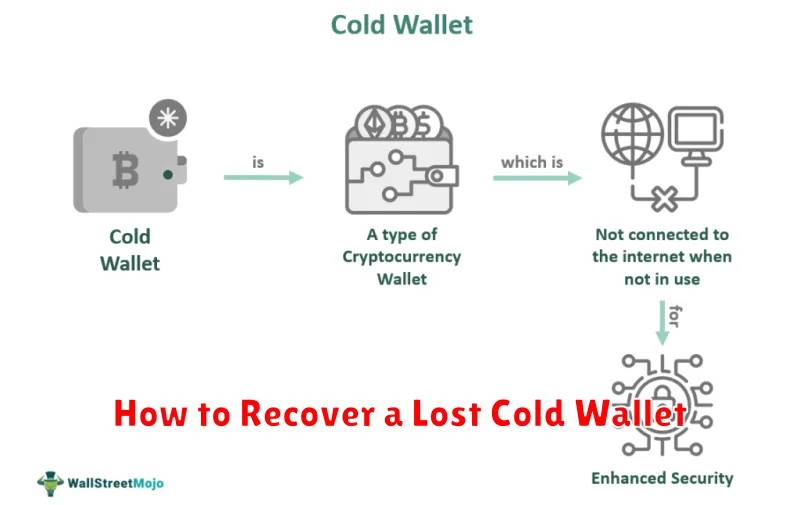
Recovering a lost cold wallet depends heavily on how you secured your seed phrase (also known as a recovery phrase or mnemonic). This phrase is the key to accessing your crypto assets. Without it, recovery is virtually impossible.
If you wrote down your seed phrase and stored it securely, retrieve it and use it to restore your wallet in the corresponding software or hardware wallet application. Each wallet provider has specific instructions for this process.
If you did not write down your seed phrase, unfortunately, recovering your funds is exceedingly difficult, bordering on impossible. Most cold wallets don’t have any backup systems besides the seed phrase. Your crypto assets are likely lost.
Prevention is crucial. Always meticulously record your seed phrase and store it securely offline, using multiple backups in different locations. Consider using a durable, tamper-evident container. Never store it digitally.

